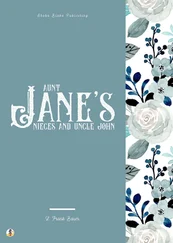Rodolfo Amedeo Lanciani - Pagan and Christian Rome
Здесь есть возможность читать онлайн «Rodolfo Amedeo Lanciani - Pagan and Christian Rome» — ознакомительный отрывок электронной книги совершенно бесплатно, а после прочтения отрывка купить полную версию. В некоторых случаях можно слушать аудио, скачать через торрент в формате fb2 и присутствует краткое содержание. Жанр: foreign_edu, История, История, на английском языке. Описание произведения, (предисловие) а так же отзывы посетителей доступны на портале библиотеки ЛибКат.
- Название:Pagan and Christian Rome
- Автор:
- Жанр:
- Год:неизвестен
- ISBN:нет данных
- Рейтинг книги:3 / 5. Голосов: 1
-
Избранное:Добавить в избранное
- Отзывы:
-
Ваша оценка:
- 60
- 1
- 2
- 3
- 4
- 5
Pagan and Christian Rome: краткое содержание, описание и аннотация
Предлагаем к чтению аннотацию, описание, краткое содержание или предисловие (зависит от того, что написал сам автор книги «Pagan and Christian Rome»). Если вы не нашли необходимую информацию о книге — напишите в комментариях, мы постараемся отыскать её.
Pagan and Christian Rome — читать онлайн ознакомительный отрывок
Ниже представлен текст книги, разбитый по страницам. Система сохранения места последней прочитанной страницы, позволяет с удобством читать онлайн бесплатно книгу «Pagan and Christian Rome», без необходимости каждый раз заново искать на чём Вы остановились. Поставьте закладку, и сможете в любой момент перейти на страницу, на которой закончили чтение.
Интервал:
Закладка:
15
See de Rossi: Bullettino di archeologia cristiana , 1863, p. 49.—Rohault de Fleury: L'arc de triomphe de Constantin , in the Révue archéologique , Sept. 1863, p. 250.—W. Henzen: Bullettino dell' Instituto , 1863, p. 183.
16
See Bibliography, p. 1. The title of the book may be translated thus: On the pagan and profane objects transferred to churches for their use and adornment .
17
The two busts of S. Peter and S. Paul, described in Cancellieri's book, Memorie storiche delle sacre teste dei santi apostoli Pietro e Paolo , Roma, Ferretti, 1852 (second edition), were stolen by the French revolutionists in 1799.
18
See Corpus Inscriptionum Latinarum , part VI., No. 351.
19
In the Byzantine period this church and the adjoining monastery were called casa Barbara patricia . They are now comprised within the cloisters of S. Antonio all' Esquilino, on the left side of S. Maria Maggiore.
20
These incrustations, and the basilica to which they belong, have been illustrated by Ciampini: Vetera monumenta , vol. i. plates xxii.-xxiv.—D'Agincourt: Histoire de l'art, Peinture , pl. xiii. 3.—Minutoli: Ueber die Anfertigung und die Nutzanwendung der färbigen Gläser bei den Alten , pl. iv.—De Rossi: La basilica di Giunio Basso , in the Bullettino di archeologia cristiana , 1871, p. 46.
21
See Andrea Amoroso: Le basiliche cristiane di Parenzo. Parenzo, Coana, 1891.—Mommsen: Corpus Inscriptionum Latinarum , vol. v. part i. nos. 365-367.
22
See Lovatelli: I labirinti e il loro simbolismo nell' età di mezzo , in the Nuova Antologia , 16 Agosto, 1890.—Arné: Carrelages émaillés du moyen âge .—Eugène Müntz: Etudes iconographiques et archéologiques sur le moyen âge .
23
See Pietro Pericoli: Lo spedale di S. Maria della Consolazione . Imola Galeati, p. 64.
24
Published in two volumes with the title: Indicazione delle immagini di Maria, collocate sulle mura esterne di Roma. Ferretti, 1853.
25
The inscription, after all, was very mild in comparison with the violent formula imposed upon Alexander VII. It read: "In memory of the absolution given by Clement VIII. to Henry IV. of France and Navarre, September 17, 1595."
26
The amphora corresponds to 26.26 litres; the metreta to 39.39 litres; the modius to 8.75 litres. The pound, divided into twelve ounces, corresponds to 327.45 grammes, a little more than 11-1/2 English ounces.
27
See Antichi pesi inscritti del museo capitolino , in the Bullettino della commissione archeologica comunale di Roma , 1884, p. 61, pls. vi., vii.
28
See de Rossi: Bullettino di archeologia cristiana , 1864, p. 57.
29
See Acta purgationis Cæciliani, post Optati opp. ed Dupin, p. 168.
30
Confess. vi. 2.
31
See Gaetano Marini: Iscrizioni doliari , p. 114, n. 279.—Giuseppe Gatti: La lex horreorum , in the Bullettino della commissione archeologica comunale di Roma , 1885, p. 110.
32
The place was called in tribus fatis , from the three statues of sibyls described by Pliny, H.N. xxxiv. See Goth. i. 25.
33
"Sank into the great flower, that is adorned
With leaves so many, and thence reascended
To where its love abideth evermore."
Longfellow's Translation.34
On the almanacs ( Notitia, Curiosum ), containing catalogues and statistics of Roman buildings in the fourth century, see Mommsen: Chronograph von 354 , etc., in the Abhandlungen der Sächsischen Gesellschaft der Wissenschaften , vols. ii. 549; iii. 269; viii. 694.—Preller: Die Regionen der Stadt Rom . Jena: Hochhausen, 1846.—Jordan: Topographie der Stadt Rom . Berlin: Weidmann, ii., pp. 1 & 178.—Richter: Topographie der Stadt Rom , 1889, p. 5; id.: Hermes , xx., p. 91.—De Rossi: Piante iconografiche e prospettiche di Roma anteriori al sec. XVI . Roma: Salviucci, 1879.—Guido: Il testo siriaco della descrizione di Roma , etc., in the Bullettino Comunale , 1884, p. 218; and 1891, p. 61.—Lanciani: Ricerche sulle XIV regioni urbane ; in the Bullettino comunale , 1890, p. 115.
35
Inscript . 139, i.
36
The fac-simile here presented is from the Corpus Inscriptionum Latinarum , vi. 820.
37
The sale of skins of victims sacrificed at Athens in the year 334 b. c., in state sacrifices only, brought a revenue of 5,500 drachmas.
38
See Henzen, Bullettino dell' Instituto , 1863, p. 58.—Mommsen: Corpus Inscriptionum Latinarum , vol. i. no. 1503.
39
See Cicero: De Divinatione , ii. 59, 123.—Preller: Die Regionen , p. 133.—Nibby: Roma Ant. , ii. p. 334.—Beckner: Topogr. , p. 539.—Cavedoni: Bull. dell' Inst. 1856, p. 102.—Visconti: Bullettino Comunale , 1887, p. 154, 156.—Middleton: The Remains of Ancient Rome , ed. 1892, vol. ii. p. 233.
40
Concerning this celebrated monument, see Tambroni and Poletti: Giornale arcadico , vol. xviii., 1823, p. 371-400.—Gell: Rome and its Vicinity , i. p. 219.—Klausen: Æneas , ii. p. 1083.—Canina: Via Appia , i. p. 209-232.—Mommsen: Corpus Inscriptionum Latinarum , vol. i. p. 207, no. 807.
41
Pliny, N. H. , x. 29, 41.
42
A copy of this celebrated picture, dating from the second century b. c., has been found in a tomb on the Esquiline. It was published in facsimile and illustrated by Visconti in the Bullettino Comunale , 1889, p. 340, tav. xi.-xii.
43
See the Annali dell' Instituto , 1854, p. 28.
44
The convent and its garden occupy the sites of the house of Augustus, the temples of Vesta and Apollo, the Greek and Latin libraries, and the Portico of the Danaids, described in Ancient Rome , ch. v., p. 109. The estate has been owned successively by the Mattei, Spada, and Ronconi families, and by Charles Mills. Its finest ornament is a portico built by the Matteis in the sindexteenth century from the designs of Raffaellino del Colle. This pupil of Raphael was also the painter of the exquisite frescoes representing Venus and Cupid, Jupiter and Antiope, Hermaphrodite and Salmace, and other subjects engraved by Marcantonio and Agostino Veneziano. These frescoes, greatly injured by age and neglect, were restored in 1824, by Camuccini, at the expense of Mr. Charles Mills.
45
See Lanciani: L' itinerario di Einsiedlen, in the Monumenti antichi pubblicati dalla Accademia dei Lincei. 1891.
46
This inscription is of such exceptional interest that it is given, as edited by Mommsen, at the close of this volume.
Читать дальшеИнтервал:
Закладка:
Похожие книги на «Pagan and Christian Rome»
Представляем Вашему вниманию похожие книги на «Pagan and Christian Rome» списком для выбора. Мы отобрали схожую по названию и смыслу литературу в надежде предоставить читателям больше вариантов отыскать новые, интересные, ещё непрочитанные произведения.
Обсуждение, отзывы о книге «Pagan and Christian Rome» и просто собственные мнения читателей. Оставьте ваши комментарии, напишите, что Вы думаете о произведении, его смысле или главных героях. Укажите что конкретно понравилось, а что нет, и почему Вы так считаете.












